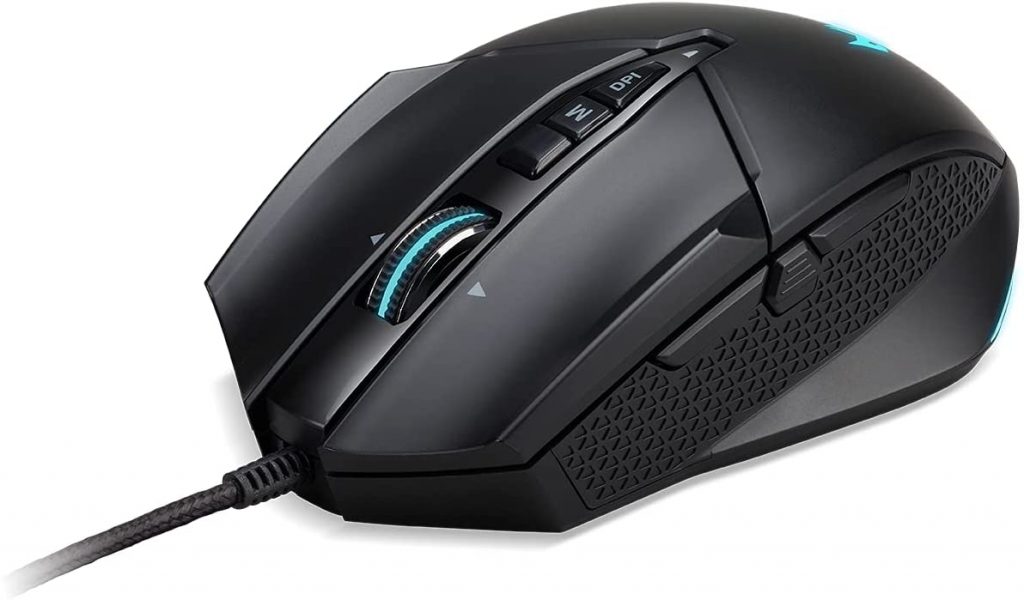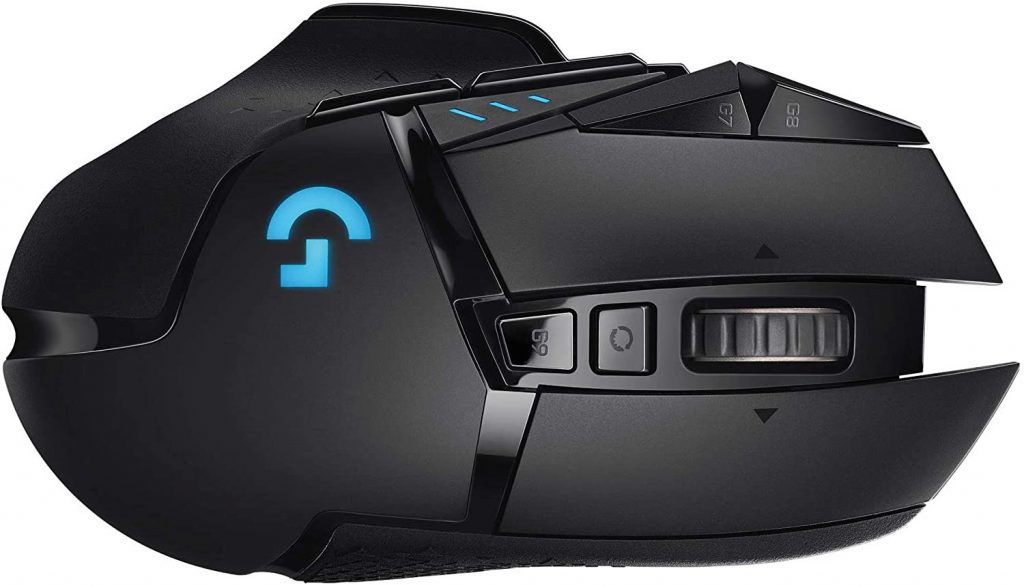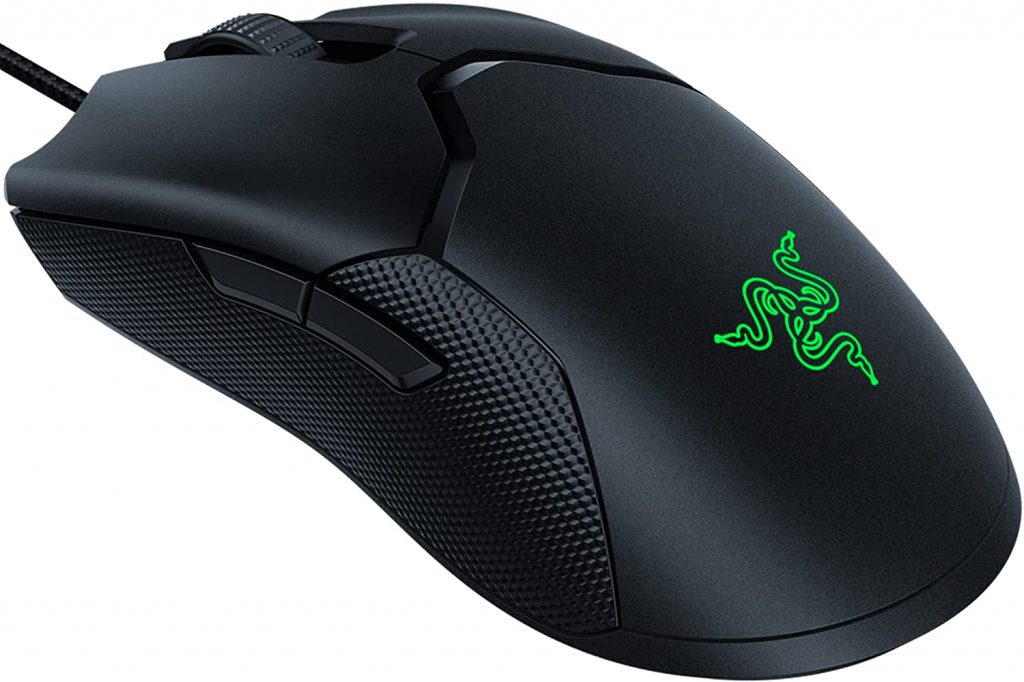Mouse manufacturers tout high polling rates designed to enhance speed and responsiveness, but it’s natural to wonder if that’s a marketing gimmick or if mouse polling rate really impacts performance. This guide details what mouse polling rate means and how to choose the best polling rate for your computer setup.
Mouse Polling Rate Is the Frequency Your Mouse Reports to Your Computer
Mouse polling rate refers to how often your mouse reports its position and other data to your computer, measured in Hertz (Hz). Hertz measures the number of times something occurs in one second. For example, if you have a 500 Hz polling rate, that means your mouse reports to your computer 500 times per second. A higher polling rate means your mouse reports more often and has less delay, measured in milliseconds.
| Polling Rate | Number of Reports Per Second | Delay in Milliseconds |
| 125 Hz | 125 | 8 |
| 250 Hz | 250 | 4 |
| 500 Hz | 500 | 2 |
| 1,000 Hz | 1,000 | 1 |
| 4,000 Hz | 4,000 | 0.25 |
| 8,000 Hz | 8,000 | 0.125 |
The most common polling rate for basic mice is 125 Hz, though gaming mice often feature polling rates of 500 Hz to 1,000 Hz. Some mice let you set a custom polling rate, while others (notably the Razer Viper 8K) boast polling rates up to 8,000 Hz.
High Mouse Polling Rates Optimize Performance
A higher polling rate can give you a performance advantage, especially if you need speed and precision for First Person Shooter (FPS) games. Let’s say your polling rate is 1,000 Hz, but your opponent is just 125 Hz. Your opponent has an 8-millisecond delay on every mouse move and click, but you only have a 1-millisecond delay. Everything else being equal, you can react and respond 7 milliseconds faster than your opponent.
That said, there is a limit to that advantage. If your polling rate is 1,000 Hz and your opponents’ is 500 Hz, the difference in response time is just 1 millisecond. It’s practically imperceptible and not likely to give you a distinct advantage.
The Best Polling Rate Balances Performance and Price
A high polling rate offers increased speed, improved responsiveness, and enhanced accuracy, but you don’t need the highest possible polling rate to perform at the highest level. If you only use your computer for simple tasks or you’re a casual web browser, you can get by with a 125 Hz or 250 Hz polling rate. Competitive gamers and productivity professionals might prefer a 500 Hz or 1,000 Hz polling rate. More than that, you’re likely paying for vanity rather than any meaningful performance enhancements since you’re unlikely to notice if your response time improves by a mere millisecond.
Also, keep in mind that your system might have constraints that limit performance. Many monitors have refresh rates of 240 Hz to 360 Hz. A mouse with a 500 Hz polling rate responds faster than these monitors can display that response. If your mouse polling rate is greater than your monitor’s refresh rate, response-to-display time is as optimized as you can get. Since some gaming monitors refresh at up to 960 Hz, a mouse polling rate of 1,000 Hz is ideal for most gamers, so you don’t need to overpay for a high-performance mouse that won’t improve gameplay.
Mouse Polling Rate Isn’t The Only Performance Factor
It’s important to recognize that mouse polling rate isn’t the only performance factor. Speed, accuracy, sensitivity, and response time are also impacted by:
- Mouse DPI: How many pixels your on-screen cursor moves for every inch your move your mouse. A high DPI improves speed; a low DPI enhances precision.
- CPU: A high polling rate increases demands on your CPU. If you have an older computer, that can burden your system and cause lags that offset any gains from increasing the polling rate (though it’s not a problem for high-end gaming computers).
- Battery life: A higher polling rate can drain your battery faster. Though that doesn’t impact performance, it does mean you’ll spend more on batteries over time.
- Connection type: Wired mice usually report faster than wireless mice, which is why many top-end gaming mice are wired. There are also performance differences between wireless technologies. For example, Bluetooth mice typically have polling rates of 125 Hz, but 2.4 GHz mice can reach rates up to 1,000 Hz.
- Cleanliness: A dirty mouse or mouse pad can cause reporting errors, no matter how high your mouse polling rate is. Learn more about how to clean your mouse and mouse pad.
Ultra-high polling rates could have a negligible impact on performance if your hardware or settings limit your mouse. The best strategy is to play with different polling rates to identify which works best with your system.
How to Check Mouse Polling Rate
You can read your mouse manufacturer’s specifications, but an online polling rate checker is the best way to measure your mouse’s polling rate accurately.
These tools measure polling rate in real-time and display your average polling rate as well as your highest polling rate when you move your mouse. Here are three options:
How to Change Mouse Polling Rate
Most basic mice won’t include an option to change the polling rate, and neither Windows nor Mac computers have polling rates in their mouse settings. You can download third-party apps to change your polling rate, but that could cause unintended consequences.
Some mice feature buttons that let you instantly switch polling rates, but most of the time you’ll need to use mouse software. Here’s how to change the polling rate for three popular gaming mice brands.
Razer
- Download and install Razer Synapse software
- Open Synapse and select your mouse
- Browse to Mouse > Performance > Polling Rate
- Choose a preset polling rate or manually set a custom polling rate
Logitech
If your mouse uses Logitech G Hub:
- Open the software and select your mouse
- Select the Sensitivity (DPI) icon
- Select a preset polling rate under “Report Rate (Per Second)”
If your mouse uses Logitech Gaming Software:
- Open the software and browse to Pointer Settings
- Select a preset polling rate (“Report Rate”)
SteelSeries
- Download and install SteelSeries Engine, now part of the SteelSeries GG software suite
- Open the software and select your mouse
- Set your polling rate using the options on the right side of the screen
Mice with High Polling Rates
These mice boast polling rates of at least 1,000 Hz, more than enough to boost performance in any application or game.
- Razer Viper 8K (up to 8,000 Hz)
- Acer Predator Cestus 335 (up to 2,000 Hz)
- Corsair Dark Core RGB Pro SE Wireless (up to 2,000 Hz)
- SteelSeries Aerox 3 Wireless (up to 1,000 Hz)
- Logitech G502 Hero (up to 1,000 Hz)
Mouse polling rate plays an integral role in performance. A high polling rate improves speed and accuracy, giving gamers and productivity professionals a competitive advantage. However, you don’t need the highest polling rate to optimize your experience. A polling rate of 1,000 Hz is more than capable of handling today’s FPS games, and performance enhancements are negligible for polling rates over 1,000 Hz.
It’s also important to recognize that other factors impact speed and responsiveness, including mouse DPI and your CPU. Peripherals such as your monitor and keyboard also affect your overall experience. If you want to optimize performance, the best strategy is to pair a 1,000+ Hz mouse with a keyboard and a monitor with a high refresh rate to increase speed, enhance accuracy, and reduce lag across the board.



